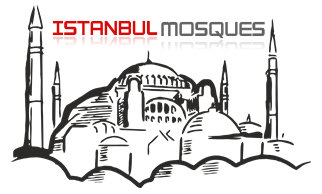
ROMAN TRACES IN ISTANBUL-2
Istanbul has been the capital of two great empires, so it’s
only natural that it has been the site of many historical masterpieces of
architecture. One of these two great empires, the Roman Empire—which would
later become the Byzantine Empire after Rome split into East and West—left
behind many great monuments.
This article will take a look at three of the most important
churches built in Istanbul at the time of the Byzantine Empire. In the
Byzantine period, the most prominent church in Istanbul was Hagia Sophia. In
second place was the Church of the Holy Apostles, and Pantokrator Monastery
Church is known as the third most important of Byzantine churches in Istanbul.
The Grand Hagia Sophia
The first Hagia Sophia was built in 360 AD by the first
Eastern Roman (Byzantine) Emperor, Constantine the Great, and was known as
“Megale Ekklesia (Great Church).” The church’s impressive appearance was truly
worthy of the capital of Christianity. In the year 404, the Patriarch of Istanbul,
Ioannes Chrysostomos (“golden mouth”) was sent into exile due to disputes with
Empress Eudoxia, the wife of Emperor Arkadios. The people then staged a
rebellion, and the church was destroyed as a result.
The first church had a roof made entirely of wood, and a
basilica layout. In the year 415, the Emperor Theodosios II built a new church
on the foundations of the old one, with five naves, and once again with a
wooden roof and a basilica layout. This second Hagia Sophia of the capital was
subsequently burned to the ground, alongside many other monumental buildings of
Istanbul, in the Nika rebellion in 531 AD.
Justinian had the third and final Hagia Sophia built on the
site of the first two churches, and appointed two of the most famous
mathematicians and physicists of the era to design it: Isidorus of Miletus and
Anthemios of Tralles. Despite the limited architectural knowledge and
construction equipment of that time, the third basilica church was built at
record-breaking speed and was completed in 537 AD, after just five years, ten
months and ten days.
When the third Basilica, the current Hagia Sophia, was built, it was the largest building on earth, apart from the Egyptian Pyramids, and maintained this title for nearly 1,000 years. Its dome was considered the largest and highest dome in the world for a thousand years. A beautiful synthesis of Greek and Roman architecture and art, this masterpiece stands today as one of the largest and most magnificent structures of its era.

The construction of the Hagia Sophia began on the 23rd of
February 532, and the church was opened for worship on December 27, 537. When
the huge cathedral was officially opened, the Emperor Justinian was rumoured to
have said, “I have surpassed you, Solomon!” in reference to the Temple of the
Prophet Solomon in Jerusalem.
The Church of the
Holy Apostles (Havariyyun Church)
Emperor Constantine turned the old Greek colony of Byzantion
into the second capital of the empire under the name "New Rome.'' Roman
emperors used to live in this city, which would later be known as
Constantinople. The new capital was adorned with structures such as the
Hippodrome, the Great Palace and the Forum of Constantine. They also
constructed the first church, Havariyyun Church (Church of the Holy Apostles),
in order to strengthen the spirituality of the city.
According to the writers of the period, the Church of the
Holy Apostles was a basilica with an unusually high dome. Its roof was
decorated with bronze plates and was gold in colour. Its interior was covered
with marble slabs rising up to the ceiling. The church, which was burned to the
ground in the Nika Revolt that broke out in 532, was rebuilt during the reign
of Justinian. It was badly damaged in the Latin Invasion in 1204.

The Pantokrator Monastery
Church - Zeyrek Mosque
The Pantokrator Monastery Church consists of three separate
buildings adjacent to one other. The first church, the construction of which
began in 1118, was dedicated to Jesus. There was another church dedicated to
Mary, which was added in 1136. In between these two churches stood the burial
chapel of the Komnenos.
Although this building complex lacks integrity, it has an
impressive majesty. The Pantokrator Monastery Church continued to be the burial
chapel of the imperial family until the last years of the Byzantine Empire. The
last person to be buried here was Helena Dragazes, mother of the last Byzantine
emperor, Constantine XI.


Leave a Comment